Turtles in the river aboriginal dot art background
Aboriginal Dot Painting
Aboriginal Dot Paintings are what most people think of as modern indigenous Australian art. This unique style of painting which has gained a global reputation since it emerged in 1971, grew out of an encounter between an art teacher and a community of displaced Aboriginal people in Papunya.
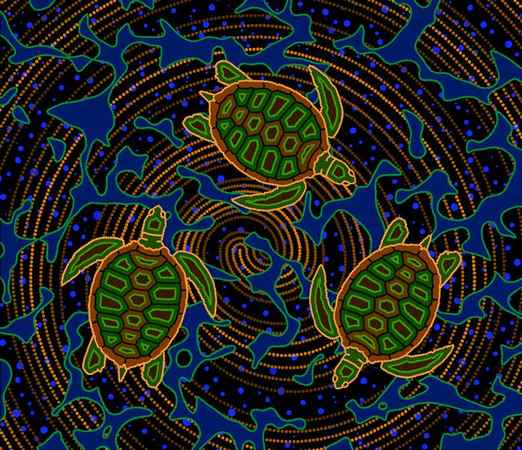
A boriginal Dot Paintings are what most people think of as modern indigenous Australian art. This unique style of painting which has gained a global reputation since it emerged in 1971, grew out of an encounter between an art teacher and a community of displaced Aboriginal people in Papunya.
Geoffrey Bardon and the Papunya Tula Artists
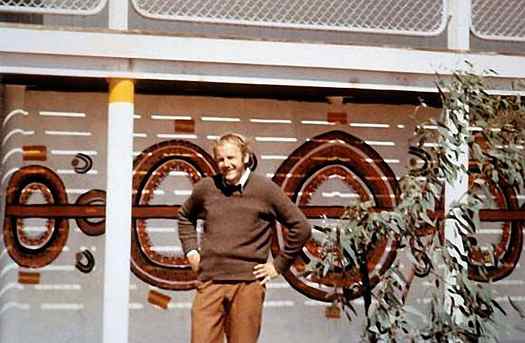
Geoffrey Bardon with the ‘Honey Ant Dreaming’ Mural at the Papunya School.
I n 1971, Geoffrey Bardon, a graduate from the National Art School in Sydney, took up a post as a primary school teacher in the remote government settlement at Papunya, about 150 miles northwest of Alice Springs in the Northern Territory. In order to gain the trust of the various indigenous groups, Bardon integrated socially with the community and immersed himself in their language and culture. As an artist he was intrigued by the ‘dot and circle’ designs he saw in Aboriginal body painting and sand drawings. In his desire to record the ephemeral nature of this art, which was either washed, trampled or blown away after the event, Barton encouraged his students to commit these symbols to the more permanent medium of synthetic polymer paints (acrylics).
When he proposed the idea for a Papunya School mural featuring a traditional design, he discovered that his students could not participate, as only the older men in the community had the authorisation to paint their ancestral designs. After much discussion among the tribal elders, Old Tom Onion Tjapangati gave permission for his ‘Honey Ant Dreaming’ story to be used as the subject of the mural and Kaapa Tjampitjinpa, a former stockman, was put in charge of the project, assisted by Long Jack Tjakamarra and Billy Stockman Tjapaltjarri.
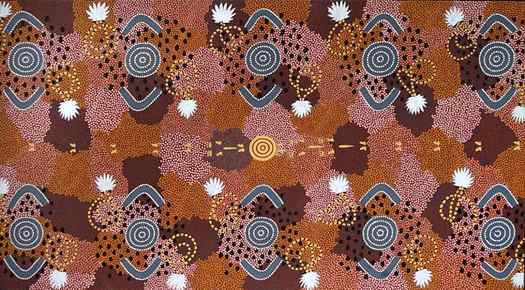
CLIFFORD POSSUM TJAPALTJARRI (1932-2002)
‘Mount Wedge’ 1985 (synthetic polymer paint on linen)
© Estate of Clifford Possum Tjapaltjarri
W hen the finished mural was a such a success, attracting unforeseen interest from across the country, Bardon arranged an area at the back of his art room so that the men could continue to paint. Former Aboriginal hunters, healers, cooks, stockmen, yardmen and labourers all attended his class and were supplied with polymer paints and boards to develop their creative skills. Not only was the work personally rewarding, but after their humiliation in the wake of the government’s ‘assimilation’ policies, painting the traditional stories from the land of their ancestors helped to restore their sense of cultural identity.
As their catalogue of paintings grew and the demand for their work increased, individuals such as Clifford Possum Tjapaltjarri began to emerge as significant artists. In 1972, Bardon organized The Papunya Tula Artists PTY. LTD, a cooperative to promote their work and protect their rights. Kaapa Tjampitjimpa, the artist who took charge of the Papunya mural was appointed as the first chairman of the group which is still in existence today, representing both male and female Aboriginal artists throughout Western Australia
The Origins of Dots in Aboriginal Art
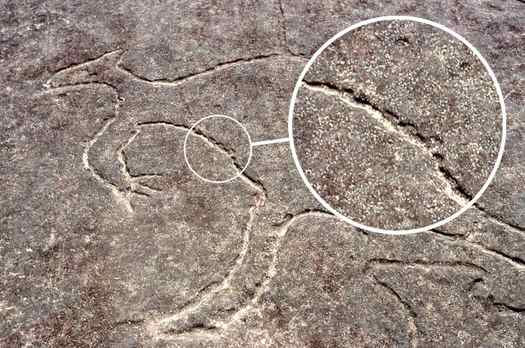
Detail of Ancient Aboriginal carving technique on rock.
T he ‘dot and circle’ imagery that characterises the paintings of the Papunya artists has its roots in Aboriginal rock art, sand drawing (images traced in the sand to accompany story telling) and body painting.
In the ancient rock carvings, artists would bore holes to map out the direction of a line drawing instead of carving an uninterrupted outline directly into the rock. Only when the required shape was completed, would they carve the line by joining up the dots. Over the centuries, many of the line carvings in the rocks have been eroded by the elements leaving the deeper pattern of holes more visible. In the magnified section of our photograph above you can see the punctuated line of the kangaroo carving, a practical technique that suggests the dotted outlines of subsequent Aboriginal art.
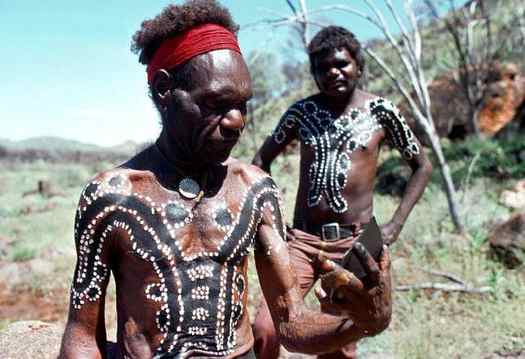
Dot and Circle Patterns in Aboriginal Body Art.
A boriginal Body painting is another indigenous art form that uses ‘dot and circle’ designs. The man in the photograph above is checking the progress of his body art in a mirror, while the man behind him, possibly the artist, awaits his reaction. The designs, which are always painted by another tribesman, are traditional patterns that vary between the different Aboriginal groups across the country. They are applied for religious ceremonies and display the family group, status and tribal ancestry of the person who bears them. Their pigments are mixed with animal fat to create a greasepaint that lasts throughout the ceremony, which can be up to several days long.
Illustration based on aboriginal style of dot painting with turtle
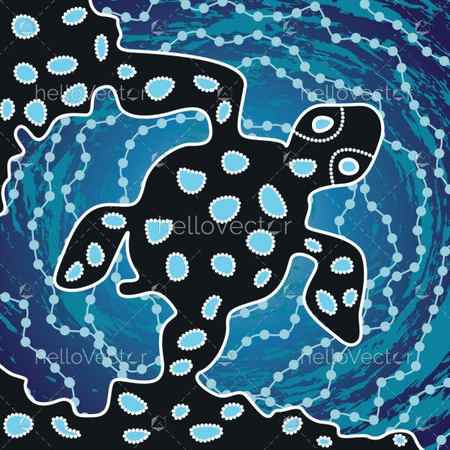
Aboriginal art of a turtle swimming under the blue ocean. Image illustrating a marine life in the form of dot painting designs and signifies the spiritual meaning of the object.
Customize image Change elements, text and colors in the design. Learn more
Pay per image US$ 2.99
Credits US$ 1.00 Pay using pre-paid credits to save more. Learn more
Please give us brief about the customization you want.
File Types: jpg and eps
Similar Vector Graphics
See more similar creative contents
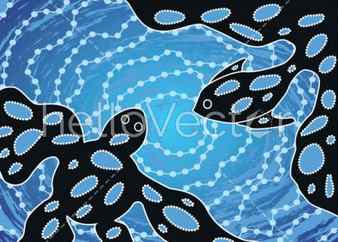
Aboriginal dot art background
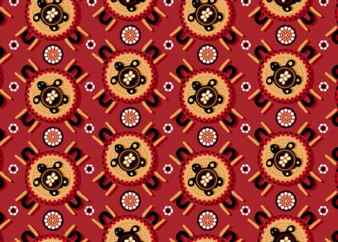
Aboriginal dot art seamless turtle pattern background
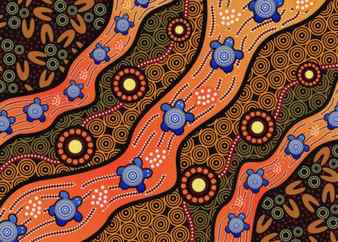
Aboriginal dot art vector turtle background
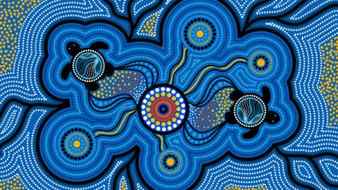
Blue aboriginal painting with turtle
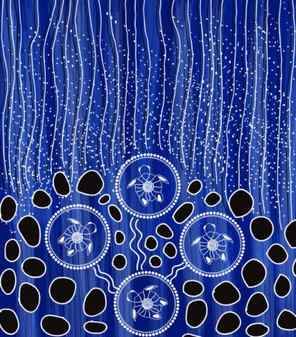
Blue aboriginal style of art with turtle
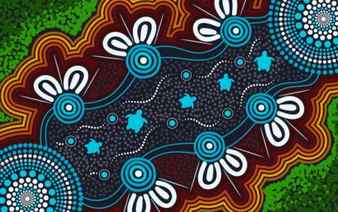
Turtles in the river aboriginal dot art background
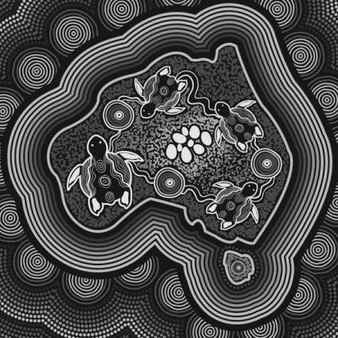
Aboriginal turtle art – Black and white
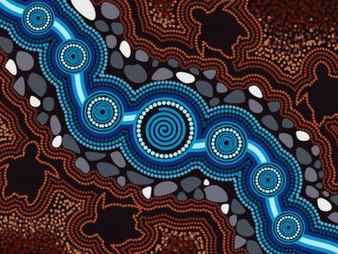
River and turtle – Aboriginal dot art
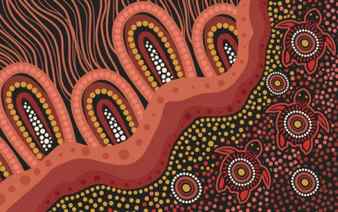
Aboriginal dot vector design with turtle
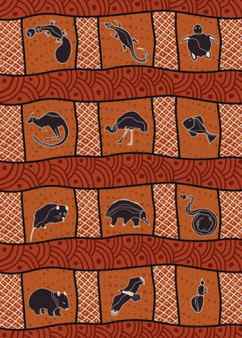
Vector aboriginal artwork with animals
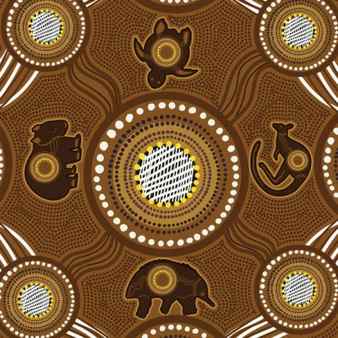
Vector Aboriginal Artwork With Animals
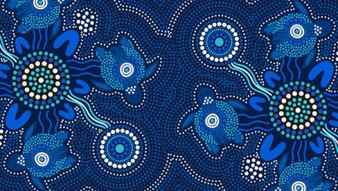
Aboriginal dot blue painting with turtle





